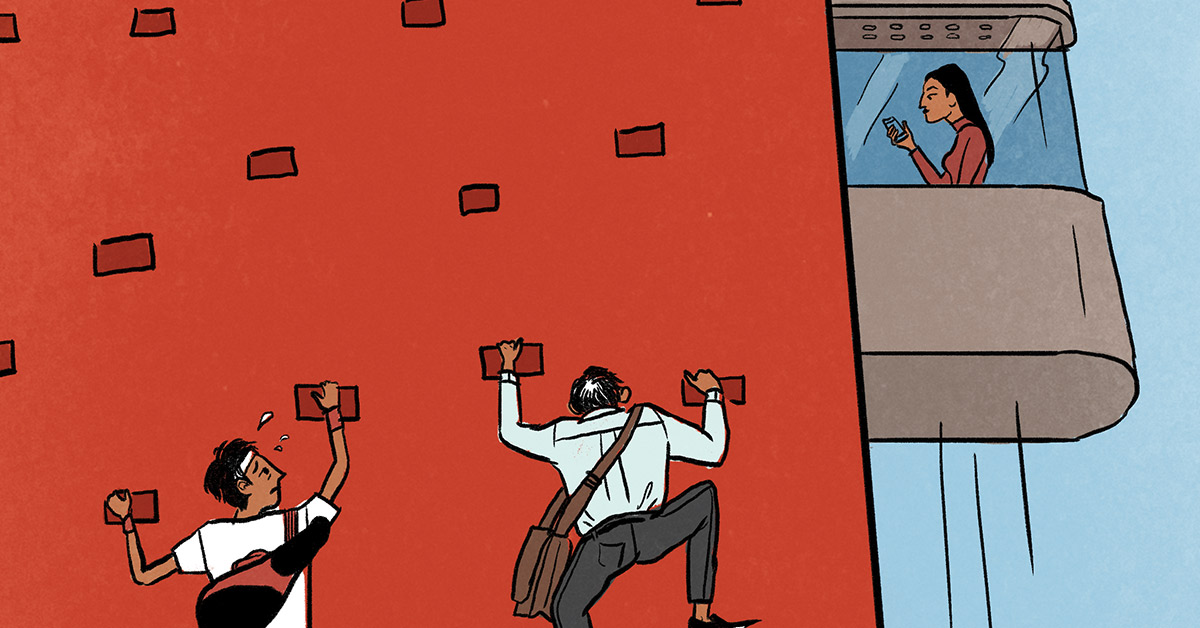By Gian Geronimo
I’m on a roll-on/roll-off vessel, minutes away from docking in Siquijor, baking in the noon heat. I am bleary-eyed and hungry, and also admittedly cranky because the boat I’m on was scheduled to leave Dumaguete at 8:30 in the morning. In typical Filipino fashion, it set sail for Siquijor two hours later.
I am exhausted so early in the morning because the work I was doing the previous day spilled over to the wee hours on the day of my trip. This was followed by last-minute packing, followed by a cab ride that overshot the airport because of an inefficient road barrier system along the Skyway, followed by a 5 a.m. flight to Dumaguete, followed by a trike ride in the city using broken Cebuano to ensure I won’t get charged P100 for a simple trip to the port, followed by waiting in line for a boat ticket, and finally, followed by a delayed boat ride to Siquijor.
But all that is over, and I am now on the boat. We are now docking at the port, located in the town named after the island province. I see turquoise waters sparkling in the brilliant sunlight—and this is just at the port. My frustration ceases immediately.
*****
I am eating a late lunch at a carinderia, an ambiguous dish that I don’t know if is sweet and sour fish fillet or pork. I am hungry after a long journey; I’ll take what I can get. I have just finished settling in my home for the next five days, a place called Lorna’s at the End of the World. Catchy name; and it seems to work, because it’s known around Siquijor, perhaps also because of the hospitality of Lorna and her husband.
It’s a no-frills, two-floor accommodation for backpackers that burned down a few years ago. I’d still recommend it, though: it has spacious rooms that cost P500 a night, complete with bathrooms and mini-kitchens, as well as hammocks where you can lay in while looking at the sea.
I have just contacted my guide, a dude named Alvin whom a friend referred following her own happy trip to the island. A few minutes later, a guy with a semi-hoarse voice gets off his motorcycle and introduces himself. He wastes no time in saying I am bound to love my stay in Siquijor.
“Nindot jud kaayo ang Siquijor (Siquijor is really so beautiful), and it’s paradise for travellers who love laidback environments,” he said in a mix of Cebuano and Filipino. I share my fondness for unpopulated beaches, and how I hope my trip will give me exactly that. “‘Sakto,” he says with a smile.
*****
Siquijor is the Philippines’ third smallest province in terms of both population and land area, following Camiguin and Batanes. To get around, people usually use motorcycles, scooters, multicabs or tricycles, although one can pass by an occasional car or two along the road. It has six towns—Larena, Lazi, Enrique Villanueva, Maria, San Juan, and Siquijor—and one can explore the island in less than three hours non-stop while following the circumferential road.
Because I want be adventurous during this trip (read: to cut costs), I opt for a rented scooter, which one can rent for at least P250 for 24 hours, plus P100 give or take for a whole day’s worth of gas money.
A staff member from a guesthouse where I get mine for the next 24 hours teaches me how to use one. To my surprise, I get the hang of it immediately. I learn that any person who knows how to ride a bike will do so.
I take, literally, the road less traveled during my first day of riding a scooter. I drive up to Lugnason Falls in San Juan, a smaller version of Siquijor’s famous three-tiered Cambugahay Falls, and bug four kids enjoying their time together to take photos of me. I then make my way further up to Siquijor’s highest point, Mt. Bandilaan, where the island’s healers and herbalists gather during Holy Week to perform their rituals and practices as well as renew their healing powers. Atop its viewing deck, I get a 360-degree view of the island province. So little, yet so majestic.
Throughout that day, I am on the road with no one else mostly, save for a few travelers whom I would pass by in the opposite direction once every few hours. I drive along steep, narrow roads surrounded by massive bushes, past rice terraces that the sun’s light had hit perfectly, basking them in a glow that makes me simultaneously sad and happy for some reason, past paths flanked by massive trees, multi-colored vines and leaves and plants, making it seem I am in a jungle by myself.
I am in unfamiliar territory, but I don’t feel fear, not one bit. I am only filled with senses of wonder, amazement and mindfulness. I am heady with exhilaration.
It is late in the afternoon on my penultimate day in Siquijor, and I am swimming in the turquoise waters of its famed Cambugahay Falls. I am soothed by the staccato splash of the falls on the water, and by the chirping of invisible insects.
I am alone, my default state during my entire trip, except for the hours when Alvin took me around the island. It is December, and I had expected to see swarms of people in the province, given I am traveling during the week of Christmas. More and more visitors have been trooping to the island in recent years, based on data from Siquijor’s tourism board. However, it seems people are spending their holidays in other places because, aside from the locals, the only ones I have seen are foreigners who’ve been here for weeks or months already.
All of the beaches and landmarks here I virtually had to myself. It is sublime.
*****
I am in a beach somewhere in the town of Maria, wearing snorkeling gear and diving for oysters with Alvin in waters filled with tall seaweed. Earlier this morning, he picked me up from Lorna’s, and I requested an all-day tour to his favorite beaches. I had just finished swimming in Maite Marine Sanctuary, one of the many such places found throughout Siquijor where one can admire the island’s marine biodiversity, when Alvin picked me up.
“Let’s go have an adventure,” he said. Alvin started by bringing me to a beach called Paradise Bay in the town of San Juan, where I promptly got my shorts ripped from the numerous sharp rocks that you have to step and hop on before you reach the water for balance. The rickety bamboo ladder to get to those rocks, probably one of the steepest I’ve used so far, is another endeavor altogether. After swimming in the deep and blue waters of Paradise Bay, we then drove to the beach where I am swimming now.
We are having for lunch the oysters we have just finished getting from the depths of the sea, after Alvin makes a fire and places the oysters snugly within the twigs and leaves These are thinner and longer than the ones people normally think of. Alvin tells me how the people here would pluck these oysters from time to time, and there would always be some available whenever they dove for them.
We make a beeline towards the nearest sari-sari store to wash off our late lunch with a pitcher of tuba (coconut wine), and I practice my broken Cebuano with the people there watching a soap opera. It’s the stuff Alvin tells me a lazy afternoon in Siquijor is made of, but the day isn’t over yet, and so we go to two more beaches.
Kagusuan has powder-fine white sand as well as humongous rocks lined up throughout the shore. We then head towards Bacong, which takes some effort to reach. “When I was driving a foreigner here a few months ago, he asked me if I was kidnapping him. I didn’t think he was joking,” Alvin tells me as we drive along dense woodland to reach the beach.
The zigzagging path opens into secluded Bacong Beach, which is surrounded by trees and has a rocky shore. There are strong waves today, which means I cannot snorkel. I have to be content instead with feasting my eyes on the scenery and on fresh coconut Alvin gets from one of the many trees surrounding the beach area. I wait a while to check if I can get a glimpse of the wild monkeys that apparently romp along the shore and among the surrounding trees. I don’t.
We leave the beach as the sun is beginning to set. In the middle of our exit, Alvin realizes he forgot his goggles, and promptly leaves me in the middle of the woods for almost half an hour. As if I haven’t had enough solitary time in Suquijor already, it’s comforting to be left there temporarily, actually. I listen to the chirping of insects and birds, to the rustling of the leaves, to the quiet whistling of the wind. I close my eyes. I am a living thing surrounded by other living things.
Alvin returns. “Anong ginagawa mo?” he says, laughing at me. I give a sheepish grin.
*****
I am writing on my journal in the dining area of a resort called U-Story. While Siquijor boasts majestic sunsets that I look forward to when each day draws to a close, the sun goes down way too early for my liking. I can’t complain, because it’s December. I compensate by waking up at around five every morning, and take walks by the beach, watching the fishermen set up their nets and prepare for a day’s work, gazing at the tide slowly making its way up the shore.
I had also begun writing daily journal entries four months prior to my trip, and while here, I recollect each day’s activities while having dinner at some of the tastefully designed places in the whole island, such as Baha Bar and U-Story, where I am now. The former draws visitors with its Hawaiian/bohemian vibe, and with a stage where local musicians perform on some days of the week. I am more especially drawn to U-Story’s Bali vibe, though, and its tastefully designed and highly ornamented interiors, Buddha statues, rattan lamps and all.
The early sunsets, the sparsely populated beaches and other destinations, my pockets of evening silence — this trip, I realize, has inadvertently become a retreat of sorts.
There are no aswang or engkanto here, but I may as well be enchanted.
This article originally appeared on the April 2016 issue of Scout.

























Comments